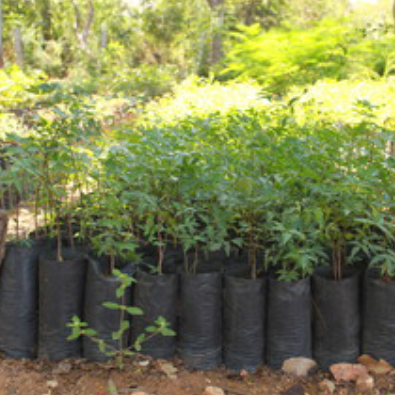
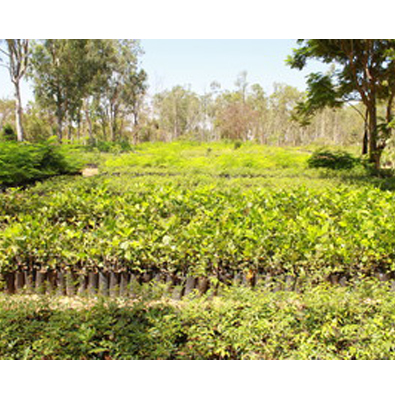
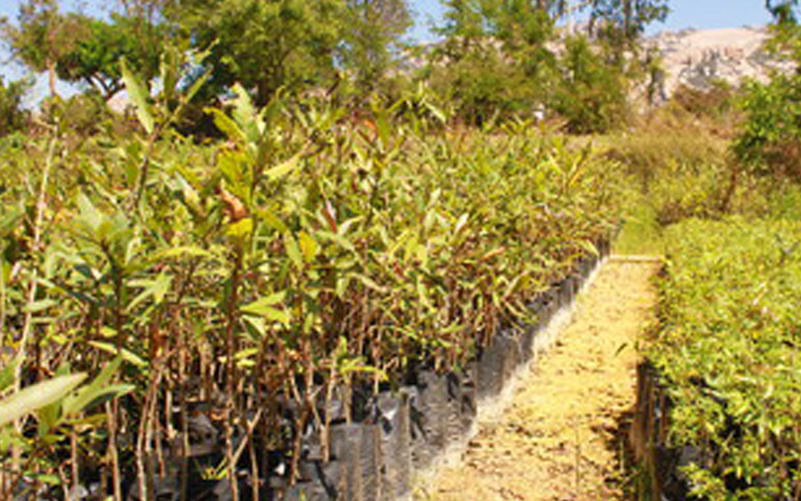
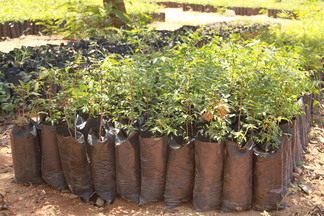
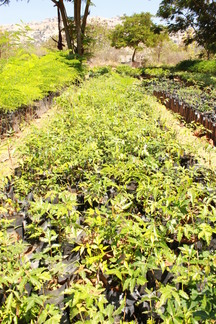
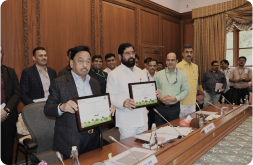
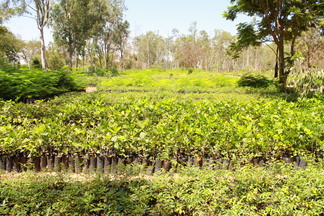




Project Target
0% Remaining
15,000
Trees Planted out of 15,000 Trees

Project Location:
Plantation of trees in the community lands of Papagni river basin, Anantapur district, Southern Andhra Pradesh, India.
Project Aim
The article ‘Soil Erosion Andhra Pradesh’ by Dr. S. L. Patil from the Indian Institute of Soil and Water Conservation elaborates on the quantitative details of the soil loss in the state and the need for initiation of rapid conservation methods. The potential of minimal conservation efforts to provide greater returns has also been mentioned by him, which makes tree plantations extremely productive in the area.
The European Environmental Agency highlights the ability of the forests to prevent disasters in the long term if timely action is taken. The increase of forest cover increases the water retention capacity of the area thereby preventing floods. It also shields against landslides, that are rampant in the area and cause great loss of life and resources as mentioned by the Geological Survey of India. In the article titled, ‘Global Forum on Food Security and Nutrition’ contributed by Eva Muller ( Director of the Forest Economics, Policy and Products Division of the Forestry Department, FAO) and Fred Kafeero ( Forestry Officer of FAO with extensive field experience on participatory forestry and improving forest-based livelihoods), mentions the role of forests in mitigating the effects of climate change and contributing to food security for the most vulnerable people, thus making plantation of trees extremely important to the community and the environment at large.
Seethaphal (Annona squamosa), Raavi (Ficus religiosa), Kunkudu (Sapindus mukorossi), Velaga(Limonia acidissima), Kukka Neredu(Alstonia scholaris), Gangaravi(Thespesia populnea), and Kanuga(Pongamia pinnata)
The plantation of local species has contributed to the conservation of resources like soil by preventing the rapid flow of rainwater. The ground-water retention capacity of the soil also increases thereby supporting the vegetation growth in the area in a cyclic manner. The agriculture in the nearby region also is supported due to the contribution of the trees as well as the addition of nutrients to the soil. The absorption of carbon and release of oxygen contributes to a healthy environment and keeps the global temperature in check. This, in turn, prevents major natural disasters and shields the community from major losses due to them.
The Non-Timber Forest Products contributed is a source of additional livelihood opportunity for the people, in addition to the improved agricultural output provided by the trees, thus making the tree plantation in the area very productive.
Social Impact of Growing Trees
Community Engagement
Tree planting initiatives often involve local communities, which can lead to greater community cohesion.
Ecological Education
Provides opportunities for community members, especially children, about the importance of environmental sustainability.
Urban Beautification
Trees contribute to the aesthetic enhancement of urban areas, making cities more pleasant and liveable.
Climate Resilience
By improving green cover, tree planting helps make communities more resilient against climate impacts like heatwaves.
Employment Creation
Planting trees creates employment for local community members like planting and maintenance, administrative roles, and more long-term jobs in management.
Wildlife Habitat
Trees provide critical habitats for various species of wildlife. Enhancing tree cover helps preserve biodiversity, which can be an ecological boon for local communities
Copyrights @ 2025 All rights reserved by Pangea EcoNetAssets Pvt Ltd.